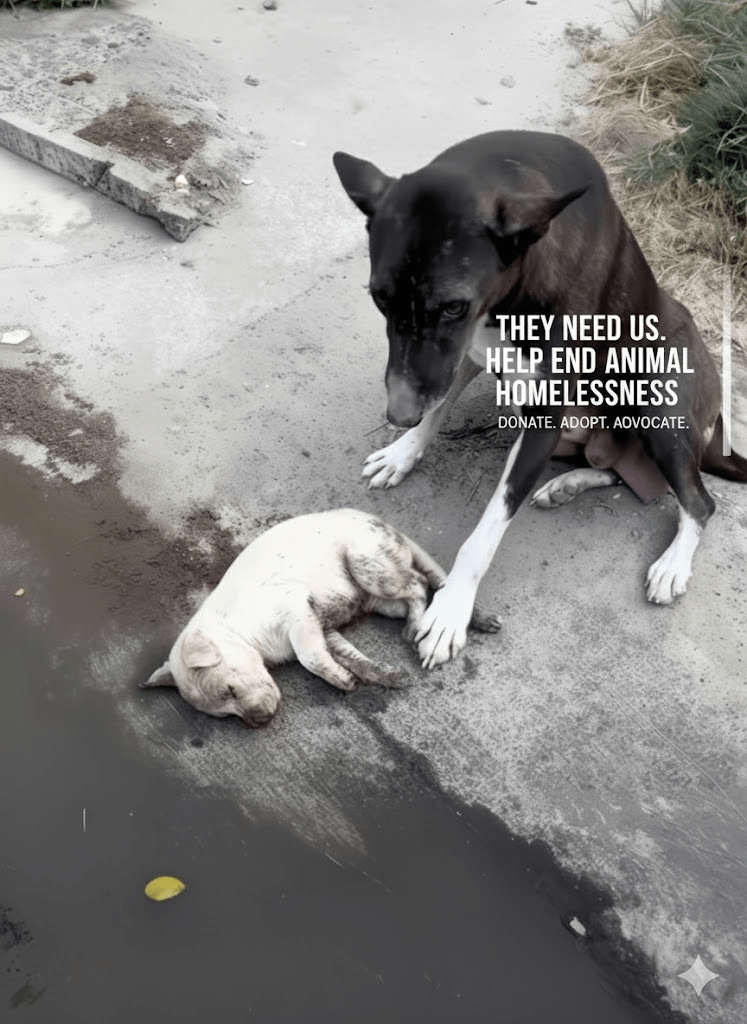The stark reality captured in this poignant image transcends a mere snapshot; it is a profound narrative of maternal love, resilience, and the raw, unvarnished struggles faced by countless animals in our world. The weary gaze of the mother dog, her paw gently resting beside her motionless pup, speaks volumes without uttering a single sound. Her posture, a protective arch over the vulnerable form, embodies an instinctive, unwavering devotion that defines the very essence of motherhood. This isn’t just a scene of a dog and her offspring; it’s a window into the silent suffering, the deep bonds, and the tireless fight for survival that unfolds daily, often unnoticed, in the periphery of human existence. It compels us to pause, to feel, and to confront the often-uncomfortable truths about the lives of stray and neglected animals, urging us to consider our collective responsibility towards these sentient beings. The muddy ground, the desolate surroundings, and the evident exhaustion etched on the mother’s face all contribute to a powerful visual testament to the arduous journey of survival, highlighting the dire need for compassion and intervention.
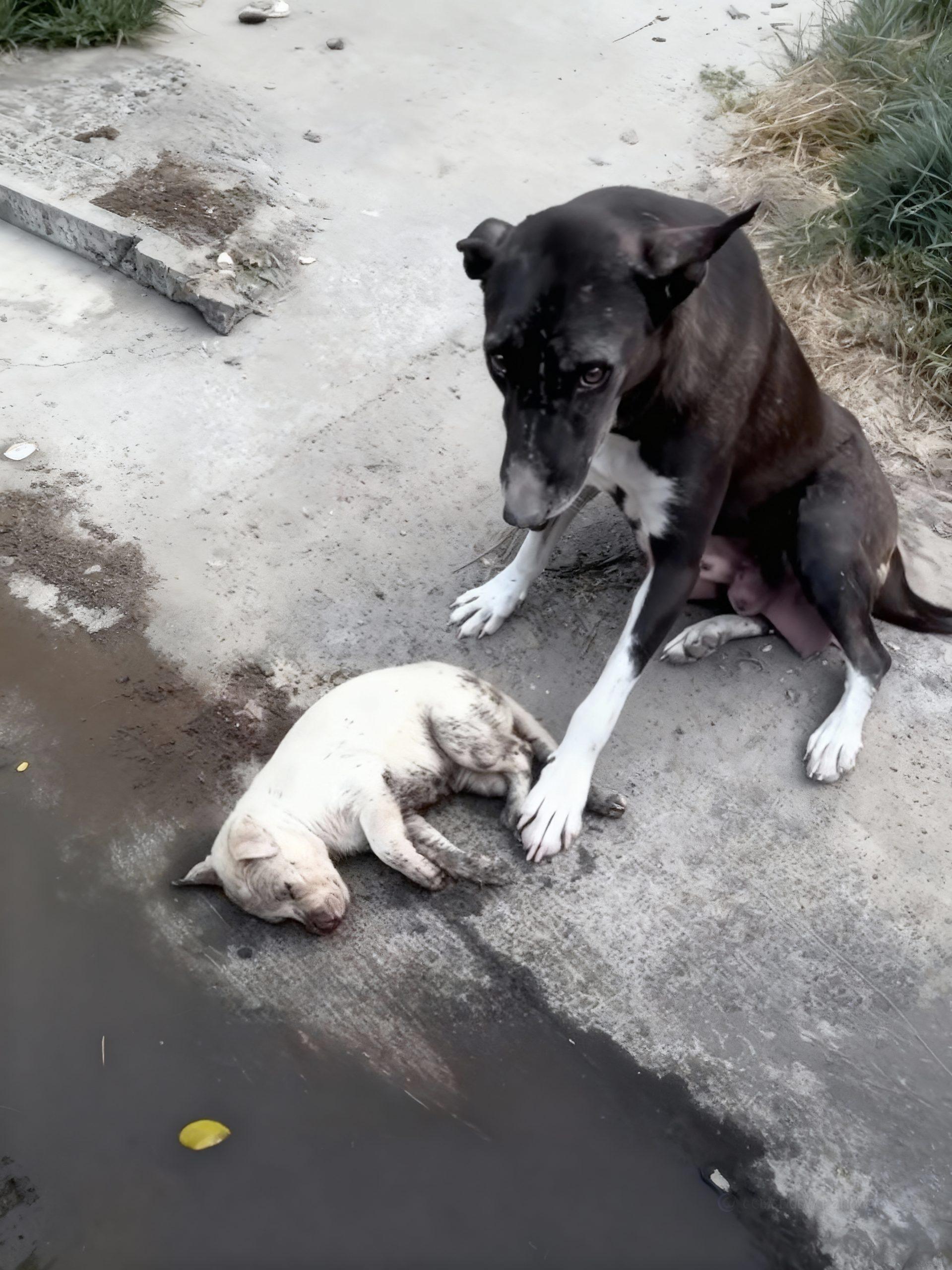
The mother’s vigilance in this photograph is palpable. Her eyes, though shadowed with what appears to be sorrow or concern, remain fixed on her small, white pup. This instinct to protect and remain present, even in the face of despair, is a hallmark of canine maternal behavior. She is not merely observing; she is holding a silent vigil, her very presence a shield against the harsh realities of their environment. This unwavering commitment to her young, even when resources are scarce and danger is constant, serves as a powerful reminder of the depth of emotional intelligence and familial bonds within the animal kingdom. Her slightly lowered head and the gentle placement of her paw suggest a profound empathy and a desperate hope for the well-being of her offspring.
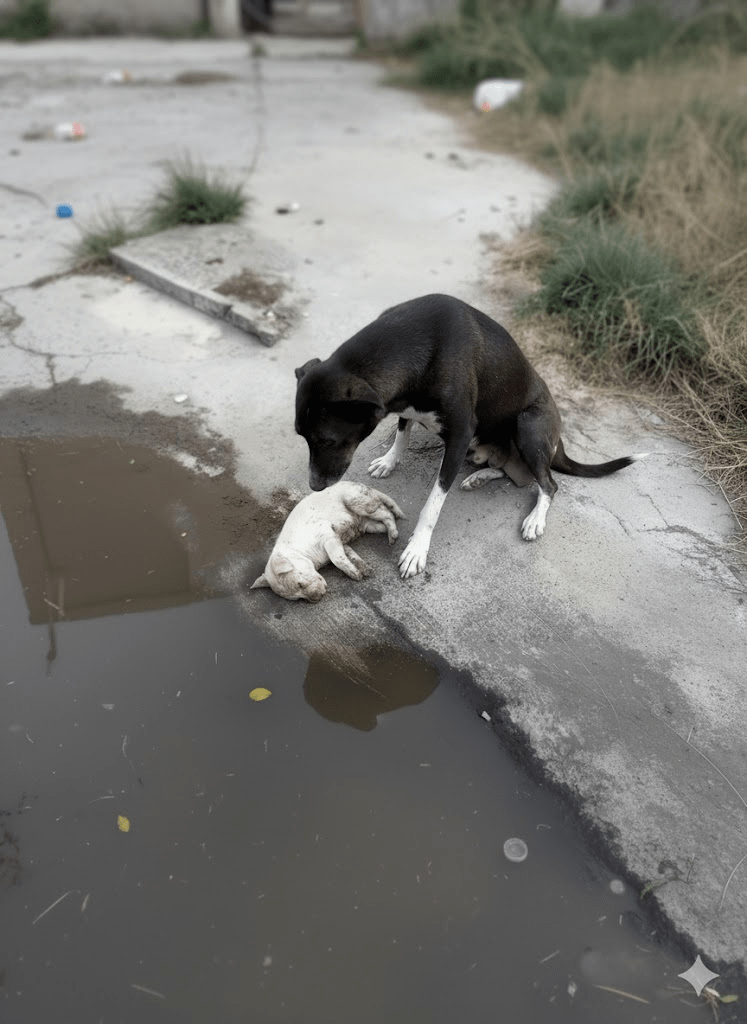
The environment surrounding the mother and pup is equally telling. The damp, muddy ground, the scattered debris, and the sparse vegetation paint a picture of neglect and hardship. This is not a safe, nurturing space for a young, vulnerable creature. Such conditions amplify the challenges faced by stray animals, making survival a constant struggle. Exposure to the elements, lack of proper nutrition, and vulnerability to disease are ever-present threats. The grimy texture of the ground and the pooling water hint at recent rain, which, while providing temporary relief from thirst, can also contribute to hypothermia in small, weak animals. This harsh backdrop underscores the immense pressure under which this mother dog is operating, trying to keep her offspring safe in a world that offers little comfort or security.
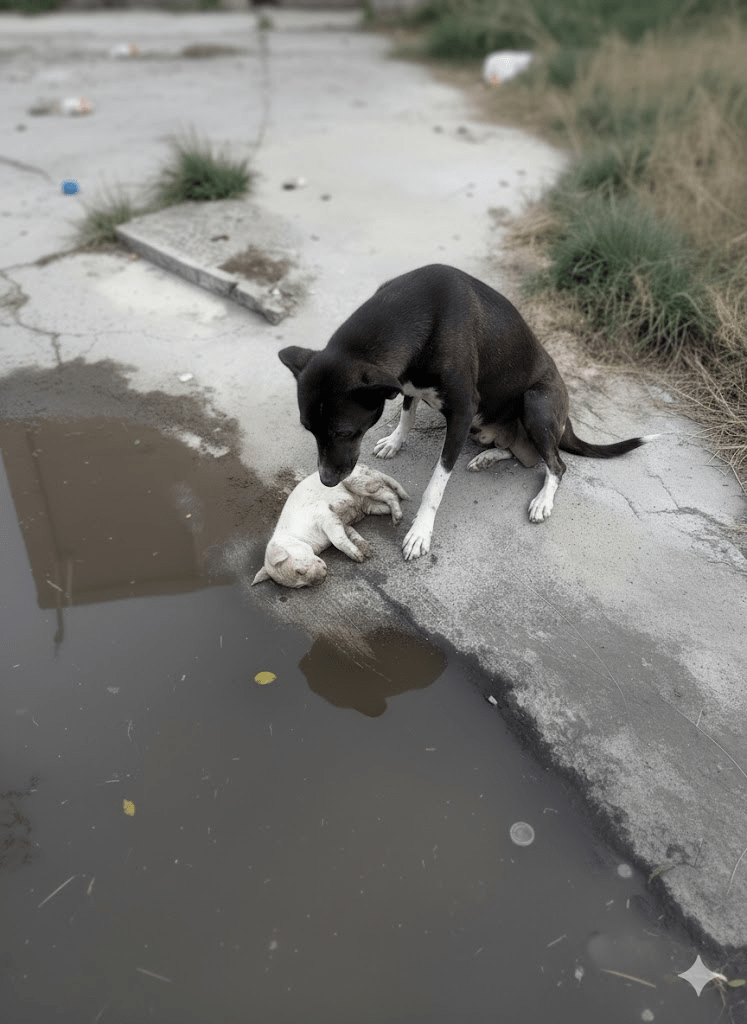
The white fur of the pup, contrasting sharply with the dark earth, highlights its fragility. The dirt clinging to its body speaks to its vulnerable state, suggesting it has been exposed and possibly struggling. In many parts of the world, stray puppies face incredibly low survival rates due to disease, starvation, and exposure to the elements. This image serves as a powerful illustration of these harsh realities, pulling at our collective conscience. The stillness of the pup raises immediate concerns about its health, amplifying the emotional weight of the scene.
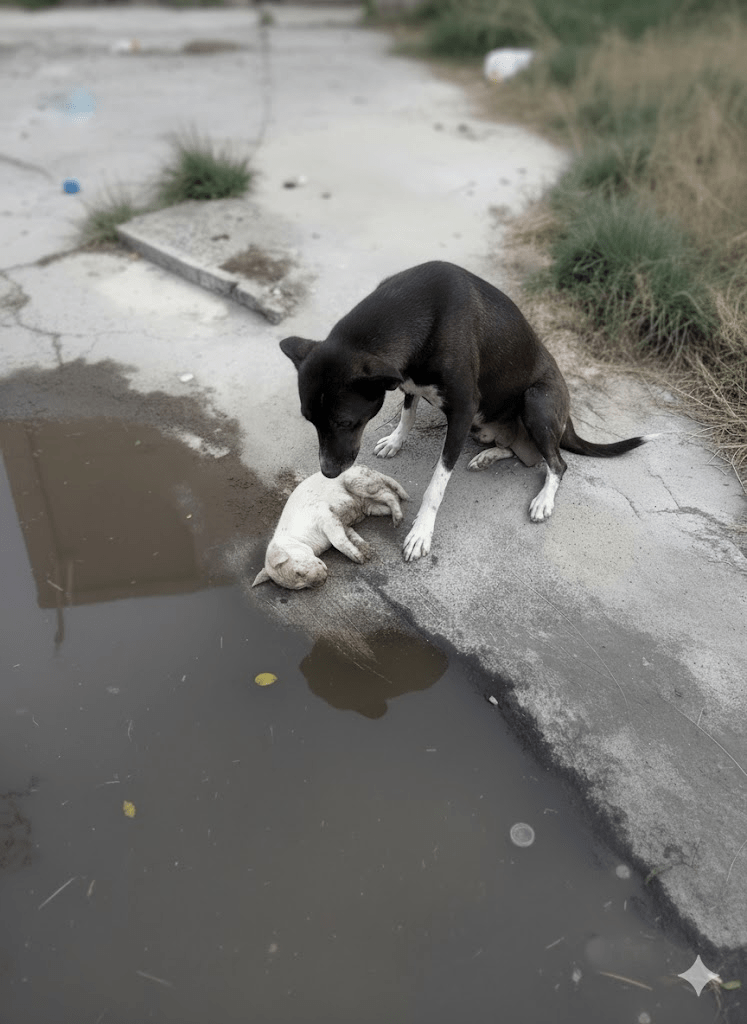
The black and white coloring of the mother dog, with distinctive white markings on her paws and chest, adds a touch of individuality to her stoic presence. These physical details, though seemingly minor, personalize her plight and make her more relatable, allowing us to connect with her on a deeper emotional level. She is not just “a stray dog”; she is an individual with her own unique characteristics, facing an immensely difficult situation. Her body appears lean, suggesting a life of scarcity, yet her posture remains strong in its protectiveness.
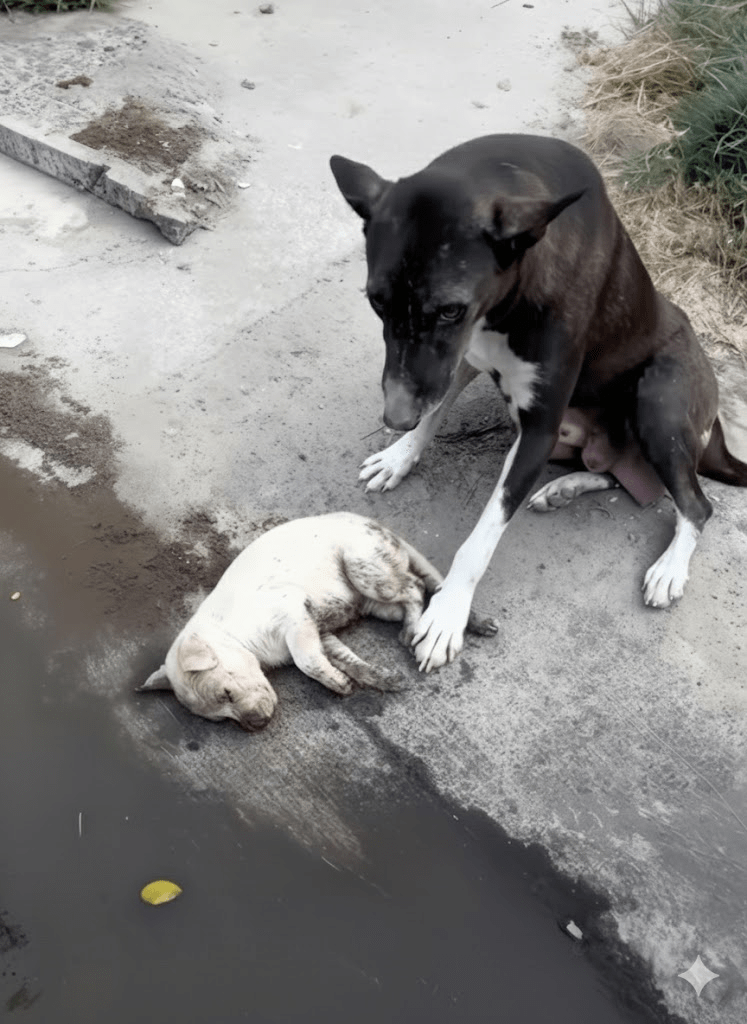
Beyond the immediate emotional impact, this image serves as a powerful call to action. It forces us to confront the ethical responsibilities we hold towards animal welfare. The pervasive issue of stray animal populations, often a direct consequence of human abandonment, lack of spaying and neutering programs, and inadequate animal shelters, requires our urgent attention. Every year, countless animals suffer and perish due to these systemic problems. This mother and pup are not isolated incidents but represent a widespread global crisis.
